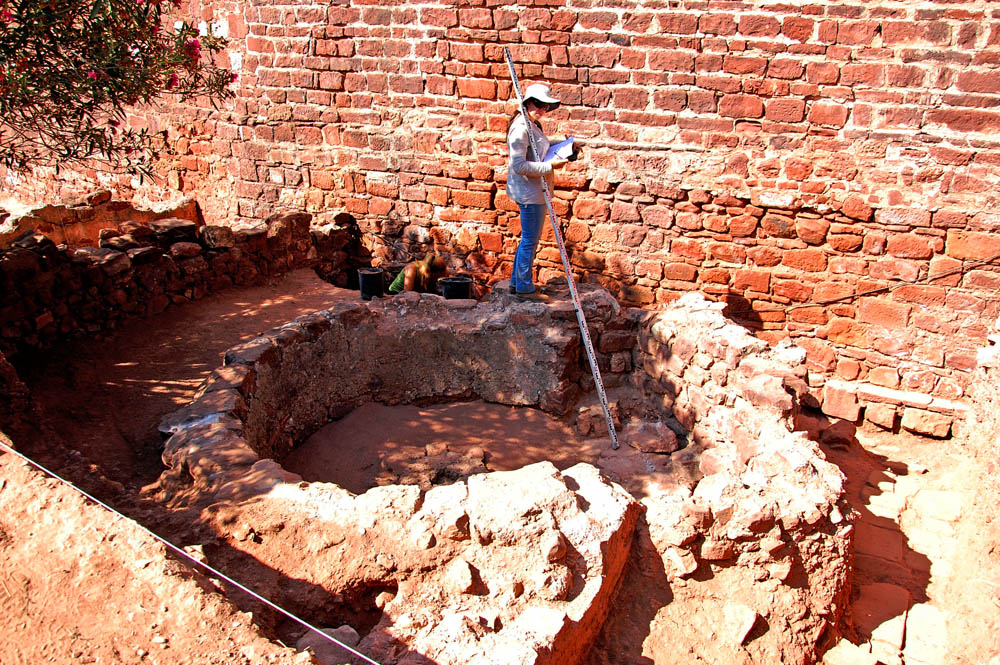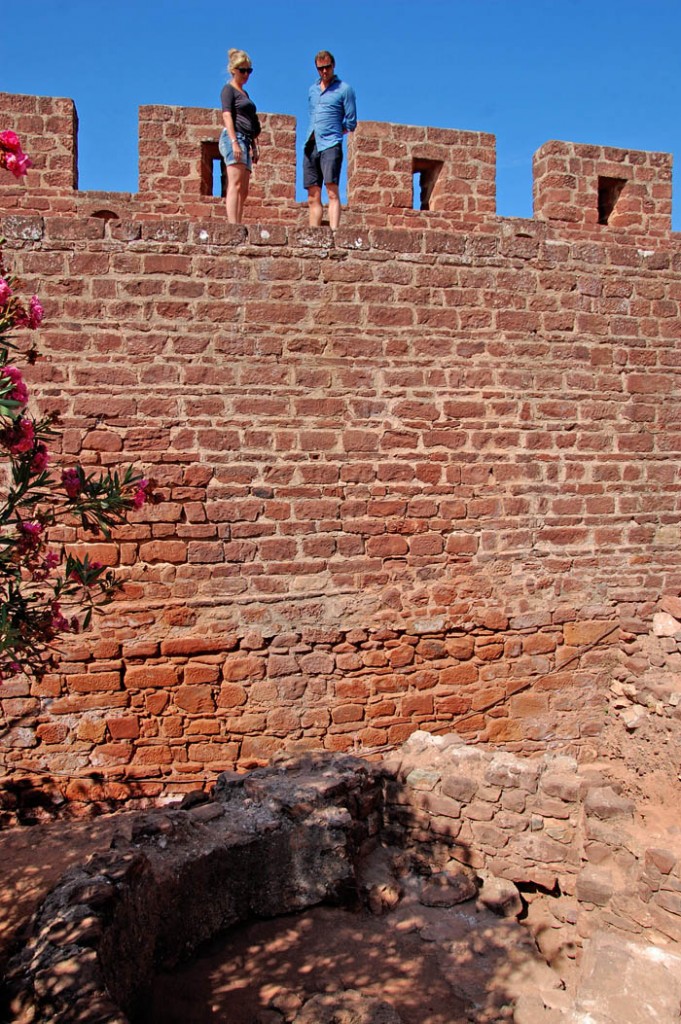
The circular structure in red sandstone of the sugar mill that would have been used when Infante D. Henrique was Mayor of Silves, in the mid-fifteenth century, is now clearly visible inside the city's castle.
This is the most important result of the new archaeological campaign that took place there, at the end of August, under the direction of Rosa Varela Gomes, from the Institute of Archeology and Paleosciences of the Universidade Nova de Lisboa.
"It was a short campaign, but this year I proposed to put the device in view, to better understand it," the archaeologist told the Sul Informação.
This is probably one of the oldest sugar mills still existing in the Iberian Peninsula. And it has the particularity of being located next to the structure, which, according to data collected by the archaeological campaign in 2006, everything indicates that it would be the home of the mayor of Castelo de Silves, that is, of Infante D. Henrique, who assumed this position in 1457 .
Rosa Varela Gomes, whose archaeological excavations made it possible to collect “materials from the XNUMXth and XNUMXth centuries” on the site, considers that it was here, in the Castle of Silves, where he was mayor and where he lived, that the Infante made “the first experiments with sugar production », which would later lead to the newly discovered Madeira.
The researcher explains that the discovery of this sugar mill "documents archaeologically what in the texts of the time is not very well explained"
In 2006, when the Polis works inside the castle led to the discovery of structures next to the west sector wall, which had to be investigated, the team of archaeologists led by Rosa Varela Gomes uncovered the house where the mayor lived. From the spoils found – pottery, coins and buckles – and also from the construction techniques and materials, it was possible to date these structures as being from the XNUMXth and XNUMXth centuries.
These first works revealed a hall, a staircase and the structure of the mill, which only this year was fully uncovered.

In the short week-long campaign at the end of August, which had the support of the Municipality of Silves, the attention of the team of six people, including Archeology students from the UNL, was also focused on a vault of the Casa da Alcaidaria discovered in the 2006 excavations.
The vault is down, along with a part of the wall on which it would stand. Rosa Varela Gomes believes that the vault would be the ceiling of a room in the Alcaidaria, which was torn down “perhaps in the earthquake of 1587”. On the pavement next to this structure, materials from the late XNUMXth or early XNUMXth century were discovered, namely fragments of Portuguese faience and nails from the wooden structure of the roof at that time.
But the team's attention is turned, above all, to the sugar mill. “A donkey should walk around here to move the mill”, says the archaeologist, showing the cobbled space around the circular area of the mill. "In Brazil, centuries later, this work was done by slaves", recalled the archaeologist who, in December 2013, presented the communication "The beginnings of sugar production in Portugal and its expansion in the Atlantic Islands", at the International Seminar on the History of Sugar, promoted in Santos, by the University of São Paulo (Brazil).
«There would also be a boiler and purge area where the sugar forms would be. The oldest forms of sugar ever discovered are from Cyprus. I haven't found any here yet," he added, speaking to Sul Informação.
From this area of sugar production, which the researcher believes will now be in the area of the castle that has not yet been subject to intervention, the archaeological work has allowed to find only a “cauldron handle”. One day, if excavations move into that area, more pages of this story may be discovered.
All these are data that led the archaeologist to believe that she had discovered what remains, five centuries later, of the house of Alcaidaria, where Infante D. Henrique lived, a figure known throughout the world for having been the first great promoter of exploration trips maritime in the XNUMXth century.
«The Infante lived here, it is not known for how long, but he did. There is a document signed by him in Silves», stresses the archaeologist.
«The Infante is the best known Portuguese historical character in the world. Associating the Castle of Silves with this important figure in History can only bring benefits to the city. But this connection must be valued, attention must be drawn to it», in order to take advantage of this added value, he stresses.
Therefore, the archaeologist defends the creation of a leaflet about the Infante's presence in Silves and the placement of specific information, at the castle's door and next to the ruins of the Alcaidaria.
"Thus, whoever passes up there and peeks here, will realize that these ruins are linked to one of the great characters of world history", concludes Rosa Varela Gomes, pointing to the tourists who circulate higher up, on the old roundabout of the Silves Castle walls.
Photos: Elisabete Rodrigues/Sul Informação



























Comments